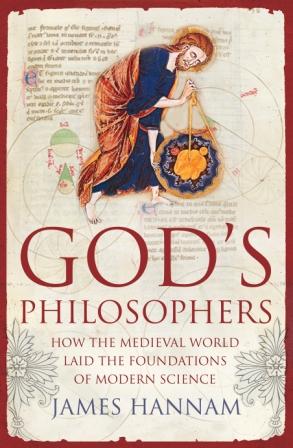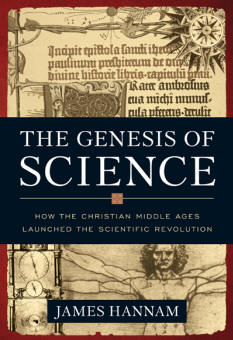
|
If you have enjoyed Bede's Library, you can order my book, The Genesis of Science: How the Christian Middle Ages Launched the Scientific Revolution (US) from Amazon.com or God's Philosophers: How the Medieval World Laid the Foundations of Modern Science (UK) from Amazon.co.uk. |
|
For my latest thoughts on science, politics, religion and history, read Quodlibeta
|
![]()
![]()
![]()
![]()
The Seekers' Guide to the Bible
![]()
The manuscripts and transmission of the New Testament
Back to contents
The problem
There are two claims made about the Bible's text that call into question its reliability. One of these is serious and cannot presently be resolved. The other is something of a chimera. The latter claim is the question of whether the version we read today is the same as the one which originally circulated. The sceptic will often seek to imply that the NT has become hopelessly corrupted over the centuries and cannot now be said to resemble what the apostles and others originally wrote. I'll look at this issue in this section of the seekers' guide.
The former difficulty is establishing who wrote the various books of the NT and when. Serious scholars have attacked this issue from all angles and have exhibited a creativity of thinking found in few other disciplines. But this is an important matter that we must consider because there is good reason to believe that the NT is not quite what it and the early fathers claim. That said, some of the ideas on authorship, even of esteemed scholars, are bizarre to say the least! The question of the authorship of the NT is in the next section of the guide. The radicals who claim that Jesus did not even exist are dealt with in a special section of Bede's Library, so I'll only consider mainstream scholarship.
Manuscripts
I will deal with the textual reliability question first because it is easier by far.
The KJV of 1611 was based on Byzantine manuscripts from the 12th century, nearly 1,100 years after the original composition of the NT. This meant that a couple of late interpolations were included that are omitted by earlier manuscripts now in our possession. The main 20th century translations (the NIV, RSV etc) use codexes dating back to the fourth century that were simply not available to the committee that worked under James I.
Let us examine the specific manuscripts and papyrus fragments that are presently extant.
Papyrus is notoriously fragile and has survived in the arid climate of Egypt better than anywhere else. It is from here that the earliest manuscripts come from. Each fragment is given a number and expressed as PX - the X standing for a number assigned in the order the papyri were discovered.
The major or early papyri are as follows. A complete listing is available here. More are discovered from time to time and these add to our knowledge of the NT.
P 52: The John Rylands Fragment
This papyrus fragment dates from about 125AD. It contains sections of John 18:31-33 and 37-38. It is the probably the earliest surviving fragment of the NT that we have and pushed the accepted composition date of John back considerably when it was published.
P45, P46 and P47: The Chester Beatty Papyri
The eponymous Sir Alfred Chester Beatty acquired these papyri in 1930. P45 is made up of pieces of thirty leaves of a papyrus codex: two from Matthew, two from John, six from Mark, seven from Luke, and thirteen from Acts. P46 contains eighty-six leaves which have Romans, Hebrews, 1 & 2 Corinthians, Ephesians, Galatians, Philippians, Colossians, and 1 and 2 Thessalonians. Portions of 1 and 2 Thessalonians and Romans are missing. P47 contains Revelations 9:10-17:2. All three are dated between 200AD and 250AD although an earlier date has been suggested by Young Kyu Kim who dates P46 to the late first century (Biblica 69, 1988).
P66, P72 and P75: The Bodmer Papyri
Martin Bodmer acquired these in 1955. P66 contains John 1:1-6:11, 6:35b-14:26 and fragments of 40 other pages of John 14-21. P72 is the earliest known copy of Jude, and 1 &2 Peter. P75 is a partial codex containing most of Luke and John. These fragments are also dated from between 200AD and 250AD.
P1, P5, P13, P22 and others: The Oxyrynchus Papyri
Discovered in 1898 in the rubbish heaps of Oxyrhynchus, Egypt , this discovery yielded over thirty-five manuscripts fragments for the New Testament. Noteworthy of these are P1 (containing Matthew 1; dated to 200AD), P5 (containing John 1, 16; dated to 200AD), P13 (containing Hebrews 2-5, 10-12; dated to 250AD-300AD) and P22 (John 15-16; dated to 225AD).
The dates assigned to these documents are approximate and a matter for debate among papyrologists. The study of ancient handwriting is known as palaeography and this is how the papyri are dated. Clearly carbon dating or other chemical analysis would be too destructive and indeed, not sufficiently accurate. The idea is instead, that certain documents can be dated definitively and all the others are 'hung' on these hooks. This means that the dates ascribed to a particular fragment are subjective, to say the least.
The controversy that can be engendered is well illustrated by the case of the Magdalene fragments. These tiny scraps of Matthew's Gospel had been relegated to the end of the second century and then largely forgotten about. Then along came Carston Peter Thiede who redated them to about 60AD and wrote about in his Jesus: Life or Legend. This caused quite a fuss and his work has been seriously questioned. But it serves to illustrate how one man's opinion could differ enormously from another's.
Conversely, a fragment of papyrus from the Dead Sea Scrolls had been certainly dated to before 68 AD when the cave it was found in was sealed. José O'Callaghan then suggested it was a piece of Mark's Gospel. Again, there were plenty of attempts to refute this, such as Graham Stanton's Gospel Truth, and the situation has reached stalemate.
A case study
I have searched the Internet for translations taken directly from some of these early papyri but have only been able to find one. If anyone knows where others are located, I would be profoundly grateful. The best way to demonstrate that the text of the Bible has retained its integrity over the centuries would have been to allow a direct comparison between early and late manuscripts. As I expect my readers cannot read Greek, I would have had to make do with English translations. However, given those are what we all use for our Bible studies anyway, the point would be made.
Luckily, the one fragment that has its own translation is the oldest of all - P52. You can look at it and the translation here. Now compare the KJV (in modern English), remembering it is based on a manuscript over a thousand years later, with the reconstruction of P52.
KJV: John 18: 31-33:
-
- Then said Pilate to them, "You take him, and judge him according to your law." The Jews therefore said to him, "It is not lawful for us to put any man to death" so that the saying of Jesus might be fulfilled, which he had said, signifying what death he should die. Then Pilate entered into the judgment hall again, and called Jesus, and said to him, "Are you the King of the Jews?"
KJV: John 18: 37-38:
-
- Pilate therefore said to him, "Are you a king then?" Jesus answered, "You say that I am a king. To this end was I born, and for this cause came I into the world, that I should bear witness to the truth. Every one that is of the truth hears my voice." Pilate said to him, "What is truth?" And when he had said this, he went out again to the Jews, and said to them, "I find in him no fault at all."
The only point at which we find some disagreement is in the last two words (and you won't find them in your NIV). The question of the accurate transmission of the NT is therefore largely academic. By that I mean, academics can and do study it but we can be satisfied that we have a good enough text of the final form of the books of the NT. However, I admit that if you wish to view the Bible as the inerrant word of God then textual corruption becomes a much more serious issue.
In fact, comparing the seven major witnesses to the Greek NT we find that about 63% of verses are identical in all of them. The percentage of agreement would be much higher still if we allowed a score of, say, 5 out of 7 as allowing us the recover the original version. Of the differences, 95% are obviously unintentional mistakes and nearly all the rest corrections or differences in emphasis that can easily be explained.
The number of 150,000 is often bandied around as the total number of differences between the 5,000 odd manuscripts in our possession. However, this includes all mistakes from even the worst late manuscripts and hardly any of these 150,000 variations cause scholars the slightest concern. When challenged about the textual reliability it is best to ask for examples and then ask yourself if the difference really matters. I have yet to come across an occasion when it does.
In my survey of the NT in chapter 2 of this guide, I noted those few textual problems that do exist. They were John 7:53-8:11 and Mark 16:9-20. That is not to say that there are not other textual controversies but most of these are with regard to the editing and composition of the texts themselves. For this reason, they qualify not as problems of textual transmission but of criticism of the NT itself. We will examine this area next.
![]()

